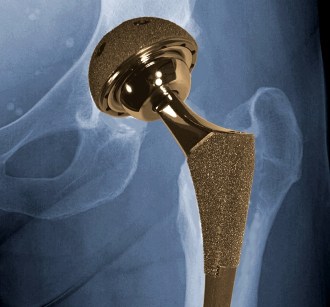Over the years, attempts have been made to make good metal-on-metal hip replacement devices. These devices were supposed to offer stronger support that lasted longer than any other hip replacement technology on the market by using durable metal as the key material. This included a mix of titanium, stainless steel, and cobalt chrome.
Yet, by 2010 there was a wave of complaints about the hip implant replacement devices with an above-average failure rate of 13% within just a few years. Developments made in hip implant replacements did not work as planned. Because of the debris created from friction in the metal-on-metal implants, many patients are experiencing side effects such as metallosis, causing inflammation and scarring around the implant.
Unwarranted Concerns
One of the biggest issues surrounding the metal-on-metal hip replacement failures is that many of the metal devices were sold without tracked performance. Normally, health products must meet a certain standard and be tested before the FDA approves them to be marketed to the general public. In this particular case, many of the devices bypassed this procedure by using the 510K process, in which the new products are proven to be substantially equivalent to an older and already-approved product so that they do not need to be tested again.
A Brighter Future
Luckily, advancements made in Germany offer a much brighter prospect to those still seeking a hip implant replacement device. The Fraunhofer Institute of Manufacturing Engineering and Automation IPA in Stuttgart has created a device made from carbon fiber reinforced PEEK and ceramic which is wear resistant. And, its biocompatibility far exceeds its metal-on-metal predecessor. Currently, the stress transfer to the bone is not as good as it should be on full metal devices, but with this new design, the load transfer will be much more natural. Patients will be relieved to hear that this device is metal free and therefore metallosis and metal poisoning will not be an issue. With this new design, the attachment of the prosthetic will be mechanically different while also being facilitated by a scalable tool that will allow surgeons to work optimally. This is a big improvement over the flawed design of the metal-on-metal devices that had to be excessively precise in the surgical process with relatively no aid.
The Last Stand
In conclusion, the metal-on-metal hip replacement was unfortunate and a huge set back in many ways. However, it has also fueled the creation of hip replacement devices that are significantly better with a sound architecture.
[box]About the Author: The Parker McDonald law firm and the firm of Harrison, Davis, Steakley, Morrison have composed a team of legal professionals focused on defending patient rights against negligent medical corporations. The Hip Implant Recovery team specializes in lawsuits related to failed hip implant systems. For more information about recalled and failed hip implants visit their blog.[/box]

I enjoyed your rich post. great stuff. I hope you release others. I will continue subscribing
Undoubtedly the full metal on metal type of implants have been under scrutiny since the problems with them have been signaled. Sine the massive recall issued by Depuy of their ASR system there were several debates about the problems, both among the medical community and at the FDA officials. The FDA still didn’t made a definite stand about fully banning these implants, despite the fact that several clinical trials, and data from other countries suggest higher then average failure rates. In these couple of days the FDA is holding a meeting to discuss this issues and I highly anticipate the reports about the hearing, although without much hope of significant changes.
It is also good to read about new development of hip replacement systems, after all this is the only way to ensure better medical devices, but proper testing in clinical trials should be made before the release of any technology, not after tens of thousands of patients signal the problems.